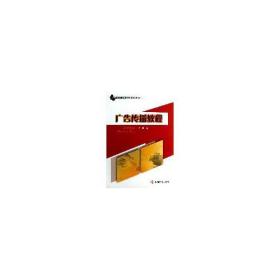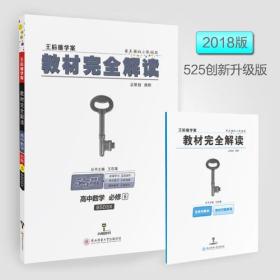
C语言大学教程(第七版)(英文版)
买书,就上二手书海官方企业店,清仓处理,真实库存,特价旧书,收藏店铺,优先发货! ps:下午三点之前的订单当天发货,之后明天发货,特殊情况除外。
¥ 15.86 1.1折 ¥ 139 八五品
库存24件
作者Deitel(哈维· 戴特尔) 著;[美]Paul、Deitel(保罗· 戴特尔)、Harvey、Paul、Deitel(保罗· 戴特尔) 译
出版社电子工业出版社
出版时间2018-06
版次7
装帧平装
货号wk-207644
上书时间2024-12-10
- 在售商品 暂无
- 平均发货时间 10小时
- 好评率 暂无
- 最新上架
商品详情
- 品相描述:八五品
- 正版二手,几十万种图书无法都提供实拍图,但均为7-9成新,无缺页、会有瑕疵或者少许磨损 、或多或少都会有划线、笔记、涂写等,不影响使用。均不保证有光盘、卡片等,辅导习题类笔记较多;书籍有多封面的新老封面随机发货,内容一致,不影响使用,介意勿拍!图片孔网自动匹配,图片与标题不符时以及图片为套装,与标题不符时的下单前请咨询客服,望周知!
图书标准信息
- 作者 Deitel(哈维· 戴特尔) 著;[美]Paul、Deitel(保罗· 戴特尔)、Harvey、Paul、Deitel(保罗· 戴特尔) 译
- 出版社 电子工业出版社
- 出版时间 2018-06
- 版次 7
- ISBN 9787121343377
- 定价 139.00元
- 装帧 平装
- 开本 16开
- 纸张 胶版纸
- 页数 808页
- 字数 1891千字
- 正文语种 英语
- 丛书 国外计算机科学教材系列
- 【内容简介】
-
本书是全球畅销的C语言教程之一。全书系统地介绍了4种当今流行的程序设计方法――面向过程、基于对象、面向对象以及泛型编程,内容全面、生动、易懂,作者由浅入深地介绍了结构化编程及软件工程的基本概念,从简单的概念到最终的完整的语言描述,清晰、准确、透彻、详细地讲解了C语言,尤其注重程序设计思想和方法的介绍。相对于上一版,这一版在内容方面新增加了C安全程序设计、"更上一层楼”习题集,更新了C++和面向对象程序设计、基于Allegro的游戏编程、C99标准介绍等内容。
- 【作者简介】
-
Paul Deitel和Harvey Deitel是全球畅销的编程语言教材和专业图书作家,“How to Program”系列是其*负盛名的一套计算机编程教材,已经销售近40年,并被翻译成中文在内的十几种语言。他们成立的Deitel & Associates公司是一家国际知名的企业培训和写作公司,专门进行计算机编程语言、对象技术、移动应用开发及Internet和Web软件技术方面的培训和写作,出版了一流的编程专业的大学教材、 专业图书以及LiveLessons视频课程。
Paul Deitel和Harvey Deitel是全球畅销的编程语言教材和专业图书作家,“How to Program”系列是其*负盛名的一套计算机编程教材,已经销售近40年,并被翻译成中文在内的十几种语言。他们成立的Deitel & Associates公司是一家国际知名的企业培训和写作公司,专门进行计算机编程语言、对象技术、移动应用开发及Internet和Web软件技术方面的培训和写作,出版了一流的编程专业的大学教材、 专业图书以及LiveLessons视频课程。 - 【目录】
-
Contents
Chapter 1 Introduction to Computers, the Internet and the Web 1
1.1 Introduction 2
1.2 Computers and the Internet in Industry and Research 2
1.3 Hardware and Software 4
1.4 Data Hierarchy 6
1.5 Programming Languages 7
1.6 The C Programming Language 7
1.7 C Standard Library 9
1.8 C++ and Other C-Based Languages 9
1.9 Object Technology 10
1.10 Typical C Program Development Environment 12
1.11 Test-Driving a C Application in Windows, Linux and Mac OS X 14
1.12 Operating Systems 21
1.13 The Internet and World Wide Web 23
1.14 Some Key Software Development Terminology 24
1.15 Keeping Up-to-Date with Information Technologies 25
1.16 Web Resources 26
Chapter 2 Introduction to C Programming 32
2.1 Introduction 32
2.2 A Simple C Program: Printing a Line of Text 32
2.3 Another Simple C Program: Adding Two Integers 36
2.4 Memory Concepts 39
2.5 Arithmetic in C 40
2.6 Decision Making: Equality and Relational Operators 43
2.7 Secure C Programming 46
Chapter 3 Structured Program Development in C 58
3.1 Introduction 58
3.2 Algorithms 59
3.3 Pseudocode 59
3.4 Control Structures 59
3.5 The if Selection Statement 61
3.6 The if…else Selection Statement 62
3.7 The while Repetition Statement 65
3.8 Formulating Algorithms Case Study 1: CounterControlled Repetition 66
3.9 Formulating Algorithms with Top-Down, Stepwise Refinement Case Study 2:
Sentinel-Controlled Repetition 67
3.10 Formulating Algorithms with Top-Down, Stepwise Refinement Case Study 3:
Nested Control Statements 72
3.11 Assignment Operators 75
3.12 Increment and Decrement Operators 76
3.13 Secure C Programming 78
Chapter 4 C Program Control 95
4.1 Introduction 95
4.2 Repetition Essentials 96
4.3 Counter-Controlled Repetition 96
4.4 for Repetition Statement 98
4.5 for Statement: Notes and Observations 100
4.6 Examples Using the for Statement 100
4.7 switch Multiple-Selection Statement 103
4.8 do…while Repetition Statement 108
4.9 break and continue Statements 109
4.10 Logical Operators 111
4.11 Confusing Equality (==) and Assignment (=) Operators 113
4.12 Structured Programming Summary 114
4.13 Secure C Programming 118
Chapter 5 C Functions 132
5.1 Introduction 133
5.2 Program Modules in C 133
5.3 Math Library Functions 134
5.4 Functions 135
5.5 Function Definitions 135
5.6 Function Prototypes: A Deeper Look 139
5.7 Function Call Stack and Stack Frames 141
5.8 Headers 143
5.9 Passing Arguments By Value and By Reference 144
5.10 Random Number Generation 145
5.11 Example: A Game of Chance 148
5.12 Storage Classes 151
5.13 Scope Rules 152
5.14 Recursion 155
5.15 Example Using Recursion: Fibonacci Series 158
5.16 Recursion vs. Iteration 160
5.17 Secure C Programming 162
Chapter 6 C Arrays 181
6.1 Introduction 181
6.2 Arrays 182
6.3 Defining Arrays 182
6.4 Array Examples 183
6.5 Passing Arrays to Functions 193
6.6 Sorting Arrays 196
6.7 Case Study: Computing Mean, Median and Mode Using Arrays 198
6.8 Searching Arrays 202
6.9 Multidimensional Arrays 206
6.10 Variable-Length Arrays 211
6.11 Secure C Programming 213
Chapter 7 C Pointers 230
7.1 Introduction 231
7.2 Pointer Variable Definitions and Initialization 231
7.3 Pointer Operators 232
7.4 Passing Arguments to Functions by Reference 233
7.5 Using the const Qualifier with Pointers 235
7.6 Bubble Sort Using Pass-by-Reference 241
7.7 sizeof Operator 243
7.8 Pointer Expressions and Pointer Arithmetic 245
7.9 Relationship between Pointers and Arrays 247
7.10 Arrays of Pointers 250
7.11 Case Study: Card Shuffling and Dealing Simulation 251
7.12 Pointers to Functions 254
7.13 Secure C Programming 258
Chapter 8 C Characters and Strings 277
8.1 Introduction 278
8.2 Fundamentals of Strings and Characters 278
8.3 Character-Handling Library 280
8.4 String-Conversion Functions 284
8.5 Standard Input/Output Library Functions 286
8.6 String-Manipulation Functions of the StringHandling Library 289
8.7 Comparison Functions of the String-Handling Library 291
8.8 Search Functions of the String-Handling Library 292
8.9 Memory Functions of the String-Handling Library 297
8.10 Other Functions of the String-Handling Library 300
8.11 Secure C Programming 301
Chapter 9 C Formatted Input/Output 314
9.1 Introduction 314
9.2 Streams 315
9.3 Formatting Output with printf 315
9.4 Printing Integers 315
9.5 Printing Floating-Point Numbers 316
9.6 Printing Strings and Characters 318
9.7 Other Conversion Specifiers 318
9.8 Printing with Field Widths and Precision 319
9.9 Using Flags in the printf Format Control String 321
9.10 Printing Literals and Escape Sequences 323
9.11 Reading Formatted Input with scanf 323
9.12 Secure C Programming 328
Chapter 10 C Structures, Unions, Bit Manipulation and Enumerations 335
10.1 Introduction 336
10.2 Structure Definitions 336
10.3 Initializing Structures 338
10.4 Accessing Structure Members 338
10.5 Using Structures with Functions 340
10.6 typedef 340
10.7 Example: High-Performance Card Shuffling and Dealing Simulation 341
10.8 Unions 343
10.9 Bitwise Operators 344
10.10 Bit Fields 351
10.11 Enumeration Constants 353
10.12 Secure C Programming 355
Chapter 11 C File Processing 365
11.1 Introduction 365
11.2 Files and Streams 366
11.3 Creating a Sequential-Access File 366
11.4 Reading Data from a Sequential-Access File 370
11.5 Random-Access Files 373
11.6 Creating a Random-Access File 374
11.7 Writing Data Randomly to a Random-Access File 375
11.8 Reading Data from a Random-Access File 377
11.9 Case Study: Transaction-Processing Program 379
11.10 Secure C Programming 383
Chapter 12 C Data Structures 393
12.1 Introduction 394
12.2 Self-Referential Structures 394
12.3 Dynamic Memory Allocation 395
12.4 Linked Lists 396
12.5 Stacks 402
12.6 Queues 406
12.7 Trees 411
12.8 Secure C Programming 415
Chapter 13 C Preprocessor 427
13.1 Introduction 427
13.2 #include Preprocessor Directive 428
13.3 #define Preprocessor Directive: Symbolic Constants 428
13.4 #define Preprocessor Directive: Macros 429
13.5 Conditional Compilation 430
13.6 #error and #pragma Preprocessor Directives 431
13.7 # and ## Operators 432
13.8 Line Numbers 432
13.9 Predefined Symbolic Constants 432
13.10 Assertions 433
13.11 Secure C Programming 433
Chapter 14 Other C Topics 438
14.1 Introduction 438
14.2 Redirecting I/O 438
14.3 Variable-Length Argument Lists 439
14.4 Using Command-Line Arguments 441
14.5 Notes on Compiling Multiple-Source-File Programs 442
14.6 Program Termination with exit and atexit 443
14.7 Suffixes for Integer and Floating-Point Literals 444
14.8 Signal Handling 445
14.9 Dynamic Memory Allocation: Functions calloc and realloc 447
14.10 Unconditional Branching with goto 447
Chapter 15 C++ as a Better C; Introducing Object Technology 453
15.1 Introduction 454
15.2 C++ 454
15.3 A Simple Program: Adding Two Integers 454
15.4 C++ Standard Library 456
15.5 Header Files 457
15.6 Inline Functions 458
15.7 References and Reference Parameters 460
15.8 Empty Parameter Lists 464
15.9 Default Arguments 464
15.10 Unary Scope Resolution Operator 466
15.11 Function Overloading 467
15.12 Function Templates 469
15.13 Introduction to C++ Standard Library Class Template vector 471
15.14 Introduction to Object Technology and the UML 476
15.15 Wrap-Up 479
Chapter 16 Introduction to Classes, Objects and Strings 486
16.1 Introduction 486
16.2 Defining a Class with a Member Function 487
16.3 Defining a Member Function with a Parameter 489
16.4 Data Members, set Functions and get Functions 492
16.5 Initializing Objects with Constructors 496
16.6 Placing a Class in a Separate File for Reusability 499
16.7 Separating Interface from Implementation 502
16.8 Validating Data with set Functions 507
16.9 Wrap-Up 510
Chapter 17 Classes: A Deeper Look, Part 1 517
17.1 Introduction 517
17.2 Time Class Case Study 518
17.3 Class Scope and Accessing Class Members 524
17.4 Separating Interface from Implementation 525
17.5 Access Functions and Utility Functions 526
17.6 Time Class Case Study: Constructors with Default Arguments 528
17.7 Destructors 532
17.8 When Constructors and Destructors Are Called 532
17.9 Time Class Case Study: A Subtle Trap―Returning a Reference to a private Data Member 535
17.10 Default Memberwise Assignment 537
17.11 Wrap-Up 539
Chapter 18 Classes: A Deeper Look, Part 2 545
18.1 Introduction 545
18.2 const (Constant) Objects and const Member Functions 546
18.3 Composition: Objects as Members of Classes 551
18.4 friend Functions and friend Classes 556
18.5 Using the this Pointer 558
18.6 static Class Members 562
18.7 Proxy Classes 565
18.8 Wrap-Up 568
Chapter 19 Operator Overloading; Class string 574
19.1 Introduction 574
19.2 Using the Overloaded Operators of Standard Library Class string 575
19.3 Fundamentals of Operator Overloading 578
19.4 Overloading Binary Operators 579
19.5 Overloading the Binary Stream Insertion and Stream Extraction Operators 579
19.6 Overloading Unary Operators 583
19.7 Overloading the Unary Prefix and Postfix ++ and --Operators 583
19.8 Case Study: A Date Class 584
19.9 Dynamic Memory Management 588
19.10 Case Study: Array Class 590
19.11 Operators as Member Functions vs. Non-Member Functions 599
19.12 Converting between Types 600
19.13 explicit Constructors 601
19.14 Building a String Class 603
19.15 Wrap-Up 603
Chapter 20 Object-Oriented Programming: Inheritance 614
20.1 Introduction 615
20.2 Base Classes and Derived Classes 615
20.3 protected Members 617
20.4 Relationship between Base Classes and Derived Classes 617
20.5 Constructors and Destructors in Derived Classes 635
20.6 public, protected and private Inheritance 636
20.7 Software Engineering with Inheritance 636
20.8 Wrap-Up 637
Chapter 21 Object-Oriented Programming: Polymorphism 642
21.1 Introduction 643
21.2 Introduction to Polymorphism: Polymorphic Video Game 643
21.3 Relationships Among Objects in an Inheritance Hierarchy 644
21.4 Type Fields and switch Statements 653
21.5 Abstract Classes and Pure virtual Functions 654
21.6 Case Study: Payroll System Using Polymorphism 656
21.7 (Optional) Polymorphism, Virtual Functions and Dynamic Binding “Under the Hood” 667
21.8 Case Study: Payroll System Using Polymorphism and Runtime Type Information
with Downcasting, dynamic_cast, typeid and type_info 670
21.9 Virtual Destructors 672
21.10 Wrap-Up 673
Chapter 22 Templates 679
22.1 Introduction 679
22.2 Function Templates 680
22.3 Overloading Function Templates 682
22.4 Class Templates 683
22.5 Nontype Parameters and Default Types for Class Templates 687
22.6 Wrap-Up 688
Chapter 23 Stream Input/Output 692
23.1 Introduction 693
23.2 Streams 693
23.3 Stream Output 696
23.4 Stream Input 697
23.5 Unformatted I/O Using read, write and gcount 700
23.6 Introduction to Stream Manipulators 701
23.7 Stream Format States and Stream Manipulators 705
23.8 Stream Error States 712
23.9 Tying an Output Stream to an Input Stream 714
23.10 Wrap-Up 714
Chapter 24 Exception Handling: A Deeper Look 723
24.1 Introduction 723
24.2 Example: Handling an Attempt to Divide by Zero 724
24.3 When to Use Exception Handling 728
24.4 Rethrowing an Exception 729
24.5 Processing Unexpected Exceptions 731
24.6 Stack Unwinding 731
24.7 Constructors, Destructors and Exception Handling 732
24.8 Exceptions and Inheritance 733
24.9 Processing new Failures 733
24.10 Class unique_ptr and Dynamic Memory Allocation 735
24.11 Standard Library Exception Hierarchy 737
24.12 Wrap-Up 739
Appendix A Operator Precedence Chart 744
Appendix B ASCII Character Set 747
Appendix C Number Systems 748
Appendix D Game Programming: Solving Sudoku 759
Index 766
相关推荐
-

C语言大学教程(第七版)(英文版)
八五品滨州
¥ 8.88
-

C语言大学教程(第七版)(英文版)
八五品枣庄
¥ 11.37
-

C语言大学教程(第七版)(英文版)
八五品滨州
¥ 5.87
-

C语言大学教程(第七版)(英文版)
全新保定
¥ 47.26
-

C语言大学教程(第七版)(英文版)
八五品枣庄
¥ 8.54
-

C语言大学教程(第七版)(英文版)
九品北京
¥ 17.80
-

C语言大学教程(第七版)(英文版)
全新天津
¥ 102.50
-

C语言大学教程(第七版)(英文版)
八五品滨州
¥ 8.88
-

C语言大学教程(第七版)(英文版)
全新长沙
¥ 60.98
-

C语言大学教程(第七版)(英文版)
八五品长沙
¥ 14.80
— 没有更多了 —











以下为对购买帮助不大的评价